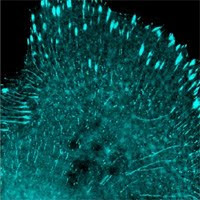Immunoprecipitation is a process of isolating a protein as an antigen by using antibodies against it. It is a powerful tool for studying proteins in biological samples and, in case of Co-IP (meaning immunoprecipitation of complexes containing a known antigen), for analyzing protein-protein interactions. Similar technologies such as chromatin immunoprecipitation (ChIP), RNA immunoprecipitation (RIP), or crosslinked and iImmunoprecipitation of RNA-protein complexes (CLIP) aid analysis of protein-DNA or protein-RNA interactions.
The major obstacle for achieving effective immunoprecipitation is the difficulty of finding usable antibodies against a target of interest. A common practice is to use tags that are fused to the C- or N-terminus of the target protein, thereby any validated, commercially available antibody can be used for co-IP in different experimental systems. However, caution must be exercised against potential interference of biological functions from the added tags. In general, one should choose tags that have been tested in many situations and proven non-interfering; still, each biological system is different. Independent validation or supporting data should be used when interpreting results from tag-based co-IP.
Tags are often selected based on high quality and commercially available antibodies. Most commonly used tags include: FLAG, Myc, HA, V5, T7, and His, which are quite small in size and in theory less likely to interfere. GST and GFP are in between 20-30kDa, but they are well documented to form self-contained and stable structures independent of their fusion partners and proved to not interfere in many cases. GST can bind to glutathione beads directly, therefore a top choice for pulldown experiments. GFP or other FPs as tags have the advantages of being also a visualization module to follow the protein both inside cells and during pulldown. However, previously available anti-GFP antibodies, either polyclonal or monoclonal, are not comparable to those against other tags, thereby limiting the use of GFP as fusion tag in pulldown experiments.
GFP-Trap, a recent addition to anti-tag antibodies, is an E. coli expressed, single domain fragment derived from camelid heavy chain antibodies with much higher stability, specificity, and affinity, making GFP based pulldown quantitative. This recent advancement should make GFP in line to become the most suitable tags for many aforementioned precipitation experiments.




No comments:
Post a Comment